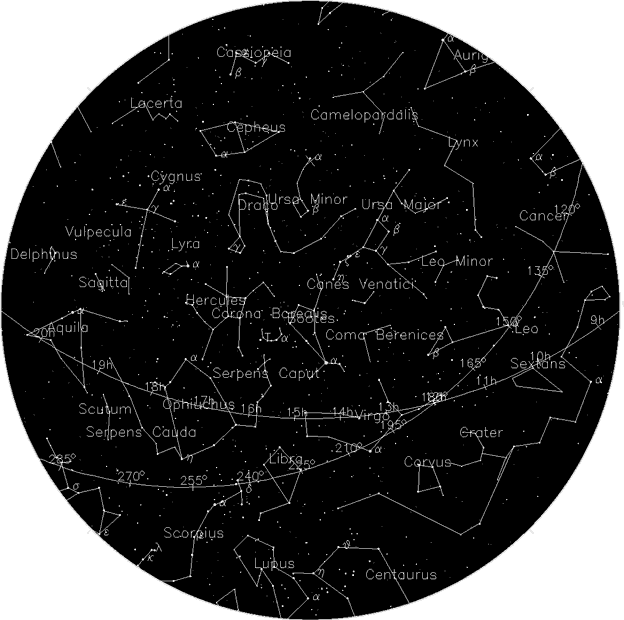DARK SKY HAPPENINGS - November 2018 Moab Dark Skies mission is to promote the appreciation and conservation of Moab’s valuable and rare dark skies. The Moab Dark Skies was established by the Friends of Arches and Canyonlands Parks in conjunction with the National Park Service and Utah State Parks Division of Natural Resources.
Most of us are many generations removed from our ancestors who were born, lived, and died in the outdoors, beneath the sun, moon and stars. But despite today’s relatively domestic lifestyles, there are certain times of the year when we still herald the movements of the stars, in particular our own sun, as we transition from one season to the next.
-edited.jpg) In September we crossed one such celestial marker of the passing of time: The autumnal (fall) equinox. Accompanying the equinox is the Harvest Moon, which is the full moon that occurs closest to the autumnal equinox. As the seasons change, so do the stars that grace the night sky. Slowly and consistently, the star constellations transition from their summer to their winter positions. For our ancestors who farmed, these seasonal transitions had great significance. They knew it was time for harvesting of crops and livestock, storing of food, gathering of fuel, and preparing for the long, dark winter to come. For nomads and travelers, stars and constellations were their reliable compasses as they moved from place to place. In September we crossed one such celestial marker of the passing of time: The autumnal (fall) equinox. Accompanying the equinox is the Harvest Moon, which is the full moon that occurs closest to the autumnal equinox. As the seasons change, so do the stars that grace the night sky. Slowly and consistently, the star constellations transition from their summer to their winter positions. For our ancestors who farmed, these seasonal transitions had great significance. They knew it was time for harvesting of crops and livestock, storing of food, gathering of fuel, and preparing for the long, dark winter to come. For nomads and travelers, stars and constellations were their reliable compasses as they moved from place to place.The changing of the seasons was of the utmost importance to the people who lived in Southeast Utah one thousand years ago as well. Within Utah’s National Parks we can see the traces of these people through rock art, pot sherds, arrowheads, and even dwellings. We know that the equinoxes were important to these people because many of their great houses were built with solar alignment in mind. For example, on the autumnal and vernal (spring) equinox, the sun either rises or sets on religiously significant features in the landscape, like the bear’s ears, when viewed from certain great houses. They marked certain constellations within architecture, and etched constellations and lunar cycles in stone. While observing the dark skies these people long ago made calendars and aligned structures with key astronomical events. When we visit Utah today, we can use the dark sky as a direct connection to the past. While the world around us may have changed dramatically over the last millennium, the sky remains the same. By recognizing the value of dark skies we recognize the importance of that timeless connection to the past, to the landscape, and to the people who have called the southwest home. . |
||||||||||||||||||||||||||||||||||||||||||||||||||||||||||||||||||||||||||||||||||||||||||||||||
